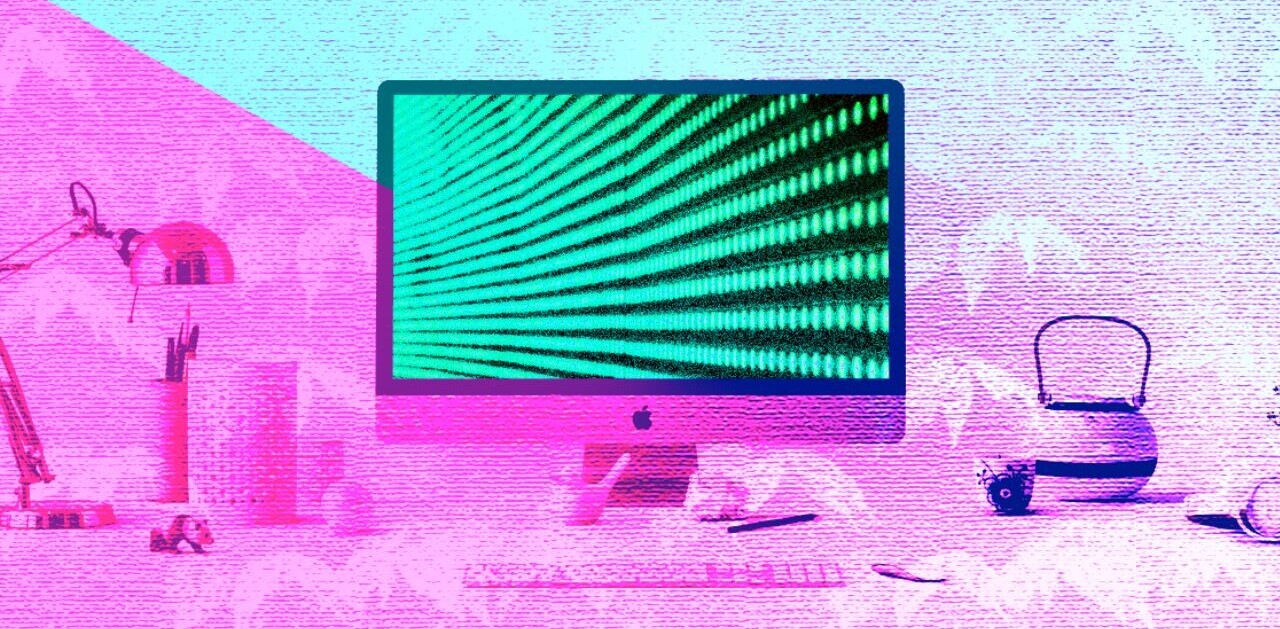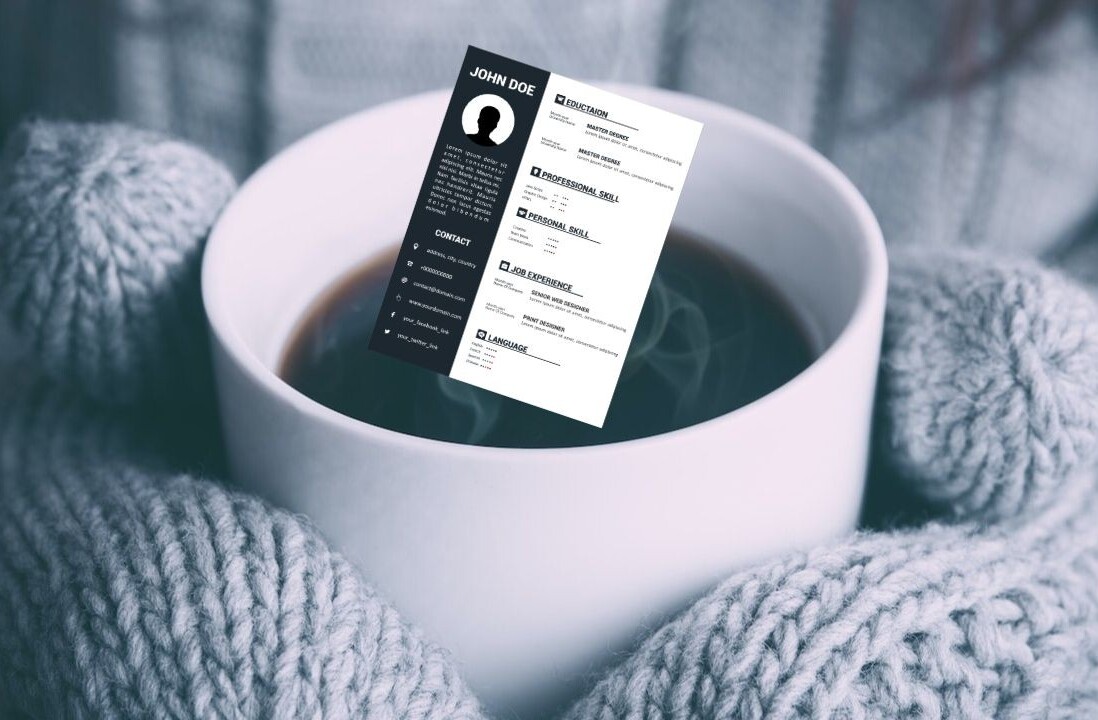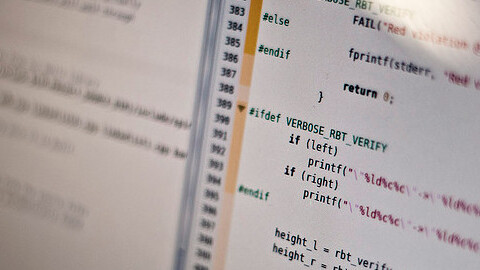
Learning to code is one of the most powerful and satisfying things you can ever do. If you’re a designer, learning to code can help you understand what you’re creating for, and if you’re looking to build a startup from scratch, being a technical founder can make things exponentially easier for you.
No matter why you want learn, the only thing you really need is curiosity. But if you’re just starting out as a novice and don’t know where to begin, here’s a list of 7 ways to start learning how to code right now for free:
1. Processing
 Processing is an open source programming language and environment for people who want to create images, animations, and interactions. It’s one of the easiest ways to get you hands dirty with code, while seeing visual results along the way. It’s a tool for learning, but is also capable of generating impressive professional work.
Processing is an open source programming language and environment for people who want to create images, animations, and interactions. It’s one of the easiest ways to get you hands dirty with code, while seeing visual results along the way. It’s a tool for learning, but is also capable of generating impressive professional work.
➤ Processing (Reference, Tutorials, Wiki, Forum, Inspiration)
2. Codecademy
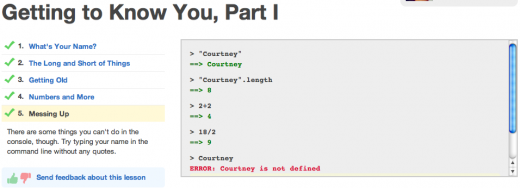 Codecademy bills itself as “the easiest way to learn how to code,” and thanks to this startup, learning to code online has never been so accessible. To motivate, Codecademy awards users with badges for completed lessons. It keeps track of your total score, your lessons completed and trophy’s earned. To top it all off, it’s completely free. Read more via TNW’s review.
Codecademy bills itself as “the easiest way to learn how to code,” and thanks to this startup, learning to code online has never been so accessible. To motivate, Codecademy awards users with badges for completed lessons. It keeps track of your total score, your lessons completed and trophy’s earned. To top it all off, it’s completely free. Read more via TNW’s review.
3. Bloc (Ruby)
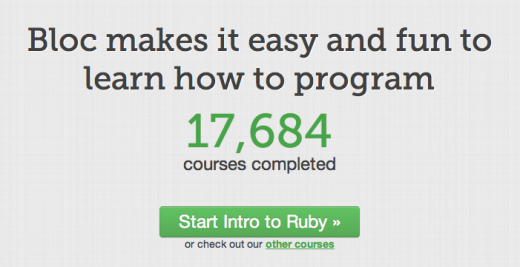 Bloc, a new educational startup, makes it easy for you to start writing in Ruby. It allows anyone to build and deploy web applications in their browser with zero setup, showing results instantly. This is great for many reasons, but speaking from personal experience, getting started with Ruby can be an absolute, jaw-dropping nightmare for beginners.
Bloc, a new educational startup, makes it easy for you to start writing in Ruby. It allows anyone to build and deploy web applications in their browser with zero setup, showing results instantly. This is great for many reasons, but speaking from personal experience, getting started with Ruby can be an absolute, jaw-dropping nightmare for beginners.
But what makes Bloc different from the likes of Codecademy? It’s simple: Codecademy uses JavaScript as its foundation for beginning programmers, while Bloc throws you right into Ruby and lets you deploy your apps online. Read TNW’s review. If you are stuck on Ruby, you’ll also want to check out TryRuby.org.
➤ Bloc
4. Get Physical
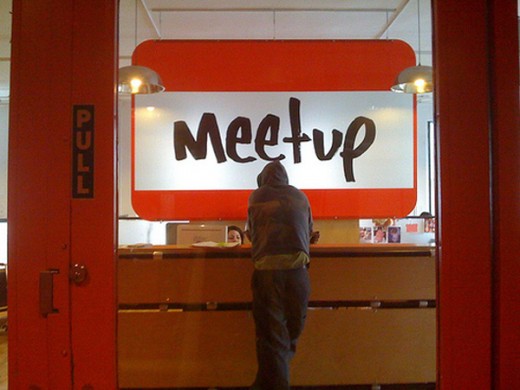 Sometimes there’s nothing better than “bumping elbows” with peers. If you have trouble learning by yourself, try attending a Meetup or a Hackathon. If you happen to live it a more “remote” location, consider starting your own event to bring your community together. Remember, there’s nothing wrong with being a beginner, so don’t be shy!
Sometimes there’s nothing better than “bumping elbows” with peers. If you have trouble learning by yourself, try attending a Meetup or a Hackathon. If you happen to live it a more “remote” location, consider starting your own event to bring your community together. Remember, there’s nothing wrong with being a beginner, so don’t be shy!
➤ Meetup, Hackathons
5. Start with HTML
 If the web is where your heart is, your best bet is to start with basic HTML. It’s a great way to get used to working with code, and after you’re comfortable, it wont be difficult for you to take up CSS. Once those are under your belt, you’ll want to give JavaScript a try.
If the web is where your heart is, your best bet is to start with basic HTML. It’s a great way to get used to working with code, and after you’re comfortable, it wont be difficult for you to take up CSS. Once those are under your belt, you’ll want to give JavaScript a try.
➤ W3Schools, 30 HTML Best Practices for Beginners, Learn HTML/CSS in 30 days
6. Grab your iPad
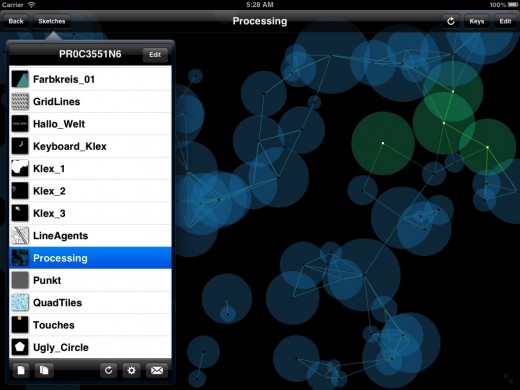 The iPad’s allure is its simplicity and distraction-free nature. The device is also still pretty new, so there’s also novelty to it as well. Most importantly, perhaps, is its portability, which makes it a great tool for learning and experimenting while you travel or commute.
The iPad’s allure is its simplicity and distraction-free nature. The device is also still pretty new, so there’s also novelty to it as well. Most importantly, perhaps, is its portability, which makes it a great tool for learning and experimenting while you travel or commute.
GLSL Studio is a new app that makes it easy for you to learn and code games on your iPad.
PR0C3551N6 is an unofficial version of Processing for the iPad, and it will soon be ready for anyone interested in editing and running Processing Sketches on the go.
7. Read, Watch, Experiment
I know. It can suck to learn the old-fashioned way, and that’s okay. Reading about programming may seem dull to many, but there’s also countless video tutorials and guides available online for every skill level. Gamification isn’t the only way to go, and sometimes all you need do to is work hard and find a few good forums (or just Stack Overflow).
In the end, there’s nothing better than getting your hands dirty and learning by doing. Mess around, have some fun and realize that you’re not supposed to pick everything up immediately. Take it one step at a time and then make something awesome.
Do you have any advice to share for beginners just getting started? Let us know in the comments below!
Get the TNW newsletter
Get the most important tech news in your inbox each week.
